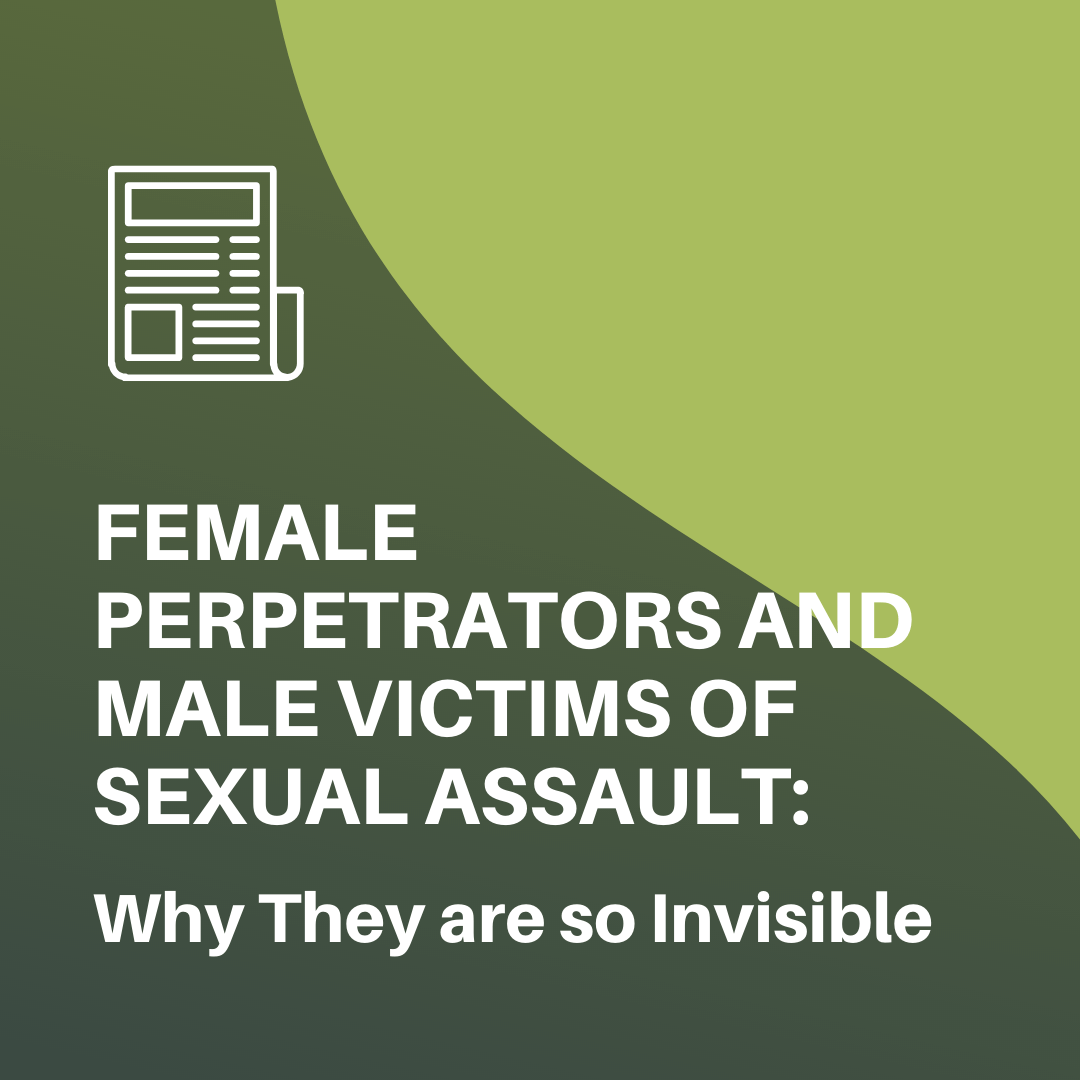Female Perpetrators and Male Victims of Sexual Assault: Why They are so Invisible

 Introductory
Introductory  Service Providers
Service Providers Both male sexual abuse survivors and female perpetrators are routinely underestimated. This article explores five interrelated reasons why: social stereotypes; stereotypes about elder abuse; training and assessment tools; research literature; and problems with data collection.
